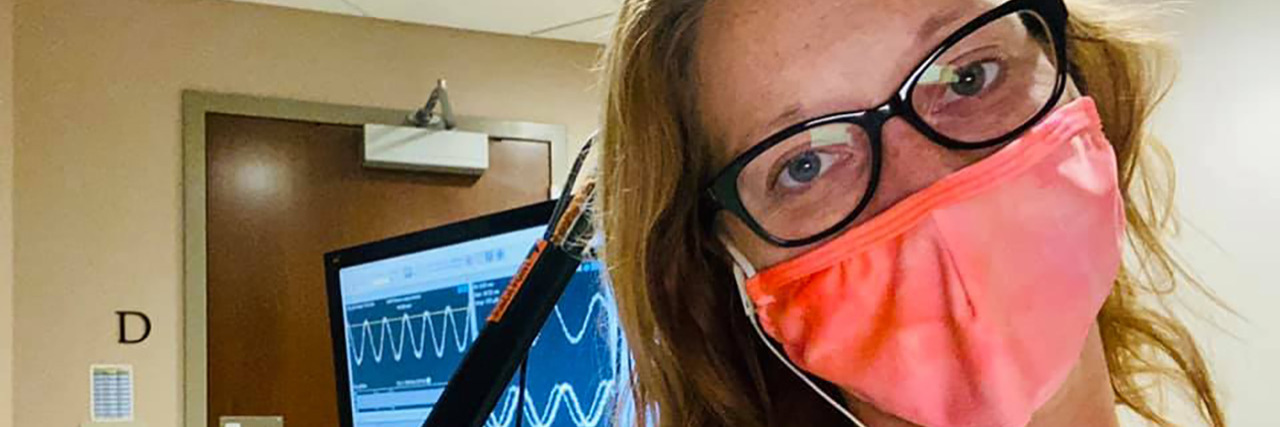Why the Test Results Showing My Rare Diagnosis Were So Empowering
In January 2016, I was diagnosed with Mal de Debarquement syndrome, a rare chronic condition that leaves me feeling as if I’m in constant motion. The steps to my diagnosis began in November of the previous year.
I had taken a flight, and upon landing, I felt the sense that I was still strapped into my seat of an extremely turbulent airplane. The symptoms left me dizzy, nauseous, unable to walk a straight line, difficulty with patterns and lights, headaches, changes to my gait, and chronic pain. The symptoms only subsided when I returned to passive motion such as driving a car.
Because MdDS is an invisible illness, it requires a multitude of tests to rule out any other disorder. I first was tested for pregnancy (and gratefully after three healthy pregnancies), it came back negative. Next was bloodwork which all came back within the normal range. Finally, I was scheduled for an MRI to check for a tumor or other phenomenon in my brain to explain my symptoms. Again, everything came back normal. My brain was perfect for a 35-year-old woman.
Thus began the rabbit hole of dizziness tests. I underwent an ENG, a caloric stimulation (which felt more like a form of torture than test), hearing evaluation, and all returned normal. However, I continued to score a “0” on a balance test (meaning I could not stand with my feet together without falling over). It appeared I had a never-ending failed sobriety test without taking a single drink.
Luckily, I was blessed within those first three months to have a brilliant neurologist who while ruling out any other diagnoses, along with confirming my flight initiating the symptoms and relief in passive motion, diagnosed me with MdDS. Thus I began treating the symptoms of this disorder and educating others on the sensation of constant motion I was experiencing. The most difficult part was unless they saw me trying to balance or paid close attention to my change in gait, most may never actually see my symptoms.
Living with an invisible illness can be difficult. It’s difficult for others to understand. It’s difficult for others to see. It’s difficult to constantly have to explain why I can’t do something. It’s difficult to be rare and invisible.
Nearly four years later, in 2020, I began experiencing additional symptoms of lightheadedness, vertigo, pain across my shoulders, and numbness and tingling in my hands. I was diagnosed with neurogenic thoracic outlet syndrome with complications. The testing was similar, including many to rule out any other possible causes, but the diagnosis was much different as they could physically see the results of the tests to prove a compression of the veins and arteries in my thoracic outlet (between my first rib and clavicle) were causing these new symptoms.
Doctors began with a physical examination where when I lifted my arms over my head, the blood drained from my hands, turning them white. When I dropped them below my shoulders, the color returned. Next included imaging and nerve study tests. An X-ray ruled out that I did not have an extra (cervical rib) which could be causing the symptoms. An ultrasound of my veins near my wrist showed that when I lifted my arms to shoulder height or higher, my pulse flatlined.
An MRI of my brachial plexus, according to Johns Hopkins Medicine, the “network of nerves in the shoulder that carries movement and sensory signals from the spinal cord to the arms and hands,” showed thickening of my nerves indicative of someone with thoracic outlet syndrome. An EMG, where a doctor inserted a needle electrode into the muscles of my forearm, ruled out any nerve damage to explain the symptoms.
Having images of the ultrasound and MRI in hand, I could undoubtedly say and see that I had neurogenic thoracic outlet syndrome. Now begins the journey of explaining the latest diagnosis and educating those around me on the pain associated with such a diagnosis.
However, it comes with the reassurance that this diagnosis is not just in my head (as I’ve often been told with my MdDS diagnosis). To which my favorite response has always been, “You’re correct. MdDS is in my head. My vestibular system to be exact.”

